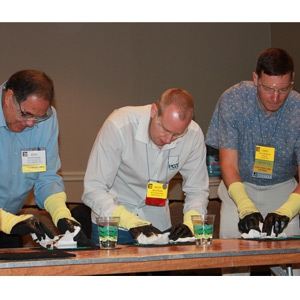- Blog
- Member Edge
- AAMA Member Profile | Solatube Vice President Neall Digert Celebrates Career Stemming from Admiration of Architecture
July 30, 2019
AAMA Member Profile | Solatube Vice President Neall Digert Celebrates Career Stemming from Admiration of Architecture

Neall Digert, Ph.D., MIES, is Vice President of Solatube International and a leader within int AAMA Skylight/Sloped Glazing Council. As Solatube’s Vice President, he draws upon his expertise in the daylighting and sustainable design and consulting arenas to build public awareness of new optical daylighting technologies, guides future product developments and refinements, develops new global sales and marketing strategies and pioneers new design and application tools and protocols to support the successful integration of optical daylighting products. We talked with Neall about his career so far.
What products does your company manufacture?
Solatube International, Inc. manufactures a wide range of tubular daylighting devices (TDDs), allowing daylight to be effectively harvested and applied to virtually any room and/or building type anywhere in the world.
Give me a brief history of your professional background and how you originally became involved in the industry.
I was originally exposed to the art and science of daylight illumination while studying Architectural Engineering at the University of Colorado, Boulder. The notion of using daylight to artfully reveal and enhance beautiful architecture captivated me, and my professional career in daylighting and fenestration was set in motion when my Daylighting Design Professor asked me to assist with the daylighting design for Denver International Airport. I was hooked! From that point on, my professional career has always focused on the development and application of new optical daylighting technologies, design techniques and codes and design standards that enable daylight to be effectively used to create beautiful buildings that are not only energy-efficient, but which truly serve to nurture the occupants within.
What accomplishment are you most proud of regarding your work as an AAMA member?
I have truly loved the opportunity to work alongside, and collaborate with, my many talented and passionate colleagues to develop new and helpful skylight and sloped glazing design guides and documents! I am also extremely proud of the work that the Code Action Committee has been able to accomplish relative to creating new and improved code language for fenestration technologies.
Where do you see the fenestration industry in the next 10 years?
I foresee the fenestration industry going through a significant evolution over the next ten years. Exciting new materials and technologies are being incorporated into fenestration products that will significantly change the dynamic performance of both side lighting and toplighting fenestration systems. In addition, the adoption of human-centric design standards centered on how access to view and daylight improves occupant health and satisfaction will also enable a whole new opportunity for justifying the use of fenestration products in future building designs. The next ten years should be a very exciting time, and I am eager to see how AAMA will advance the industry!
How can the industry work together to be more successful?
Active participation within the collaborative AAMA organizational environment is key to continued industry success. We are fortunate to have an organization such as AAMA that allows individuals from all aspects of the fenestration industry to propose, debate and ultimately collaboratively adopt new initiatives, documents and programs that elevate the industry and increase awareness of fenestration-related issues and practices.
What is the best advice you’ve received in your career so far?
The most important advice was to “find and follow my passion, and to never be afraid of where that would take me!”
Who has been most influential for you in your professional life?
I have been fortunate to work with, and learn from, many of the greatest minds in the 20th and 21st century architecture, illumination and manufacturing communities, and they have all challenged and inspired me to create diverse and meaningful partnerships that enabled the exploration of new ideas and the ability to push through traditional industry boundaries.
Read more from Blog, Member Edge
Tags: career, advice, architecture, member profile
Submit a Comment






Submit a Comment